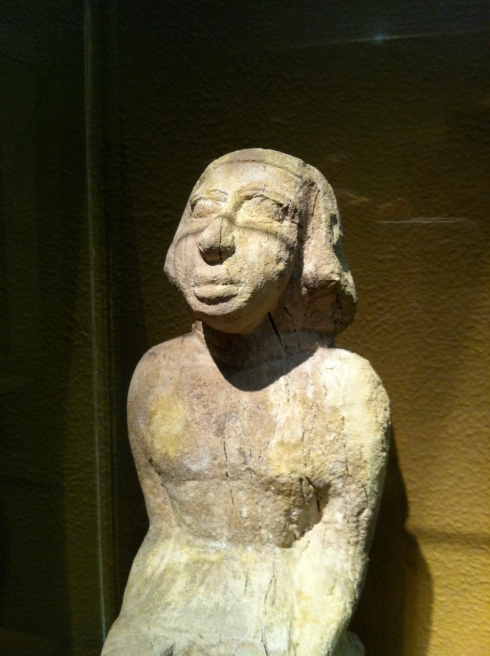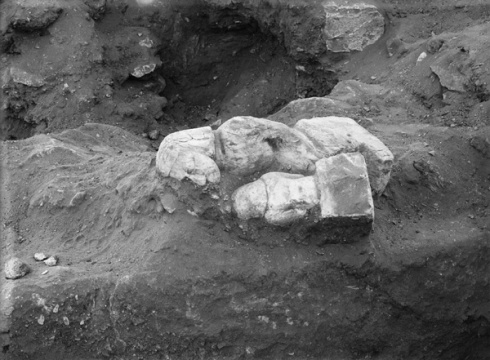This guy is one of my favorite artifacts from the MFA’s Egyptian collection. For one thing, I mean, look at him! He is just so great! What a face.
For another thing, the way he is described and displayed gives me the warm-fuzzies. It is a good argument for why context is important, and points out that the archaeological past is integral to our understanding of the piece. The plaque reads:
Statue of a seated man
From Giza, tomb G 7772
Dynasty 6, 2400-2250 B.C.
Limestone
Museum Expedition 39.832Unlike the standard type of well-carved seated figure made by competent sculptors, this statue is an extremely crude figure carved by someone probably without any training. It was discovered lying next to a smaller statuette (see figure 2). Since the purpose of such statues was to provide a reserve habitation for the soul of the deceased, this crude image was most likely carved by a person anxious to provide for the dead but unable to afford a professional piece of work. Ancient examples of such inferior work are rare; had this piece not been scientifically excavated, it might have been judged a modern forgery. [emphasis mine]
And is accompanied by this awesome photograph taken as the statue was being found:
This practice of displaying find-photos (both close-ups, like this one, as well as more wide-scale photos situating the viewer within the overall site) with the actual object is, frankly, just the coolest thing. The MFA does this with almost every artifact from the Giza expeditions, and it is an excellent opportunity for visitors to gain a more comprehensive understanding of the objects’ history, not to mention learn something about the archaeological process.
This arrangement could also potentially be used to argue in favor of reinstating partage. That smaller statue in the photo? It’s currently in the Cairo museum. Now, I don’t know how it is displayed in Cairo, but from what I understand both of these statues inform and problematize how we define Egyptian sculptural styles; the fact that they can be seen in two different contexts, by two large, different audiences is potentially a Very Good Thing.
Ok, ok, ok. All the educational goodness aside, the MFA is also pretty blatantly patting themselves on the back. They are proud of the quality of their excavations, that the excavations even existed, and the incredibly secure provenance of these items (a central issue within public criticisms of museums). In this case, I’ll allow them their self-aggrandizement. The emphasis is on education, and museums are businesses that inherently need their customers to like them. Plus, I have a hard time criticizing anything that educates people about the importance of having a secure provenance and an archaeological context. So bravo, MFA. Bravo.
DISCLAIMER: I do not know a whole lot about Egyptian sculptural styles; I would love to hear from those of you that do know something about Egyptian statuary, and what you think of the claim that it “might have been judged a modern forgery” (or anything else!).
Want to learn more about unusual Egyptian sculpture from Giza? Read this article, featuring our friend and his companion.


Leave a comment